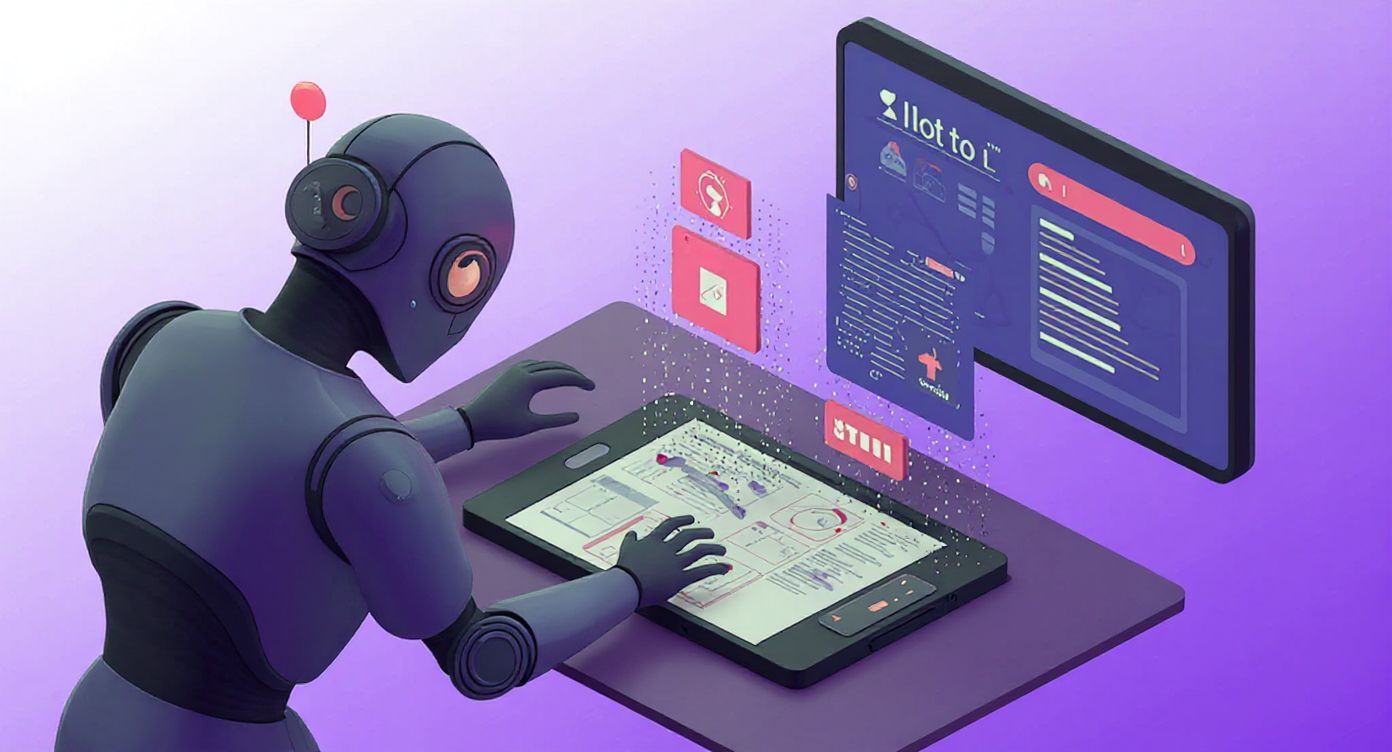Moving away from static interfaces in an AI-driven world
Imagine saying “Move it 20px to the right” to a designer. Pixel-perfect commands stifle creativity as both human designers and AI view layouts holistically and often undo tiny tweaks to maintain balance.

Giving exact sizes and positions also buries your reasoning, making it less obvious why specific choices were made. Why that color? Why that spacing? Maybe it was random? When AI updates your design later, it may erase those decisions and, along with them, your original ideas.
Instead of seeing interfaces as finished pictures, think of them as live streams. Features change, needs shift, and manual fixes become problems. AI can’t incorporate every pixel adjustment if it can't understand the reasoning for those changes.
What building UI with AI should look like
The better way is to talk to AI in plain terms. Explain your goal, not the exact look. For example, instead of saying “Make this button 100px wide,” say “Ensure the button is prominent and easy to tap,” and let AI handle the details. For instance, you might say “Let users pick from a list or type their own option,” and let AI choose a Combobox as a UI element. If you simply say “Let users pick from a list,” AI would choose a Select element. You define what you want; AI fills in the details.
With this approach, AI takes care of layout, accessibility, and style. It keeps your design consistent and up to date, while you focus on the big picture.
The future of UI is a simple promise: you explain why, and AI figures out how - delivering faster, more consistent, and scalable designs. Your designs stay fresh, flexible, and true to your vision, at least that's the idea.
What about taste and personal preference?
What about choices you can't really explain? Maybe you just know when something looks right, but you don’t have a clear reason why. In those cases, a good AI-driven design tool needs a special UX:
- Offer options: Let you pick between different looks.
- Record your choice: The AI remembers your pick and your feedback.
- Check in later: When that part of the design changes, the AI asks if your preference still stands or if it can try a new style.
This way, even your gut feelings stay part of the design process, and AI learns what feels right for you over time.
Documenting the intent instead of random decisions
When we create pixel-perfect designs, we bury intent and make it hard to record our reasoning. Generating multiple versions and trusting your gut - then never revisiting those drafts - means ideas, feedback, and rationale get lost, especially as teams grow and many people work on the same product. Stakeholders and even your future self have no clear record of why choices were made. Only the final artifact survives, even though the real value lies in the ideas and intent behind it. Artifacts alone are just one way to implement the original idea.
AB testing should not be an afterthought
It’s easy to trust your gut as a designer - but is that what users really want? Feedback loops are often painfully slow. It can take weeks or months to implement a design, gather user feedback, and learn what didn’t work. Sometimes you must rethink the entire design or address multiple issues, and over time, designers can lose the ability to critically evaluate their own work.
With an AI-driven design process, you can dramatically speed up this feedback loop - from concept to user testing in hours or even minutes. You won’t get stuck on minor implementation details or cling to outdated decisions.
This approach lets you relentlessly focus on what users need instead of personal preferences.
Adopting a new mindset
This represents a dramatic shift from how we think about design today. Today, design centers on our personal experiences and preferred workflows. With direct manipulation tools, we feel like artists shaping the world. We have complete control, and the process feels inherently creative.
With AI, the focus shifts from total control to expressing intent - guiding the outcome rather than dictating every detail. It’s about guiding others to achieve the results you want rather than doing it yourself. For those managing teams, this will feel familiar: managers don’t implement tasks themselves; their role is to ensure teams build what users need, acting as a translation layer between users and the product.



